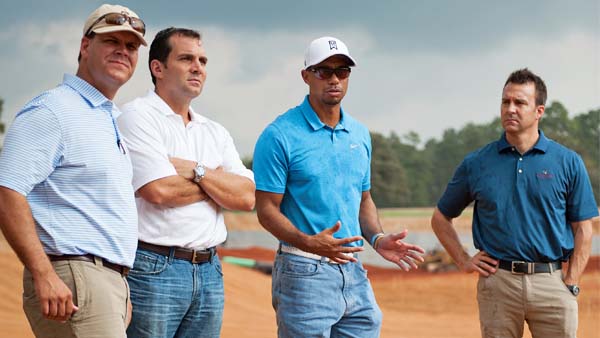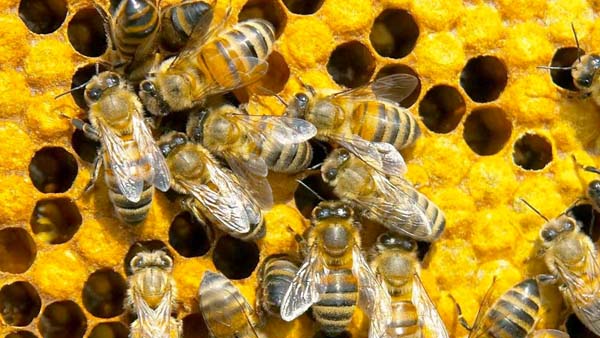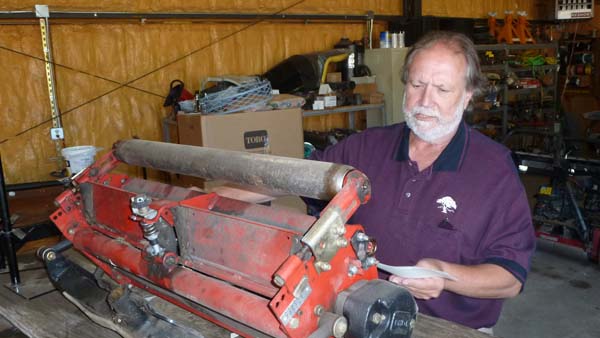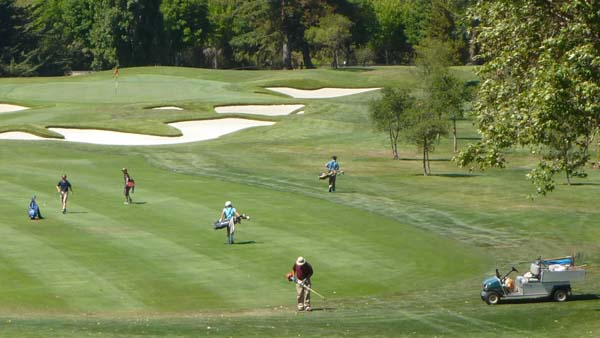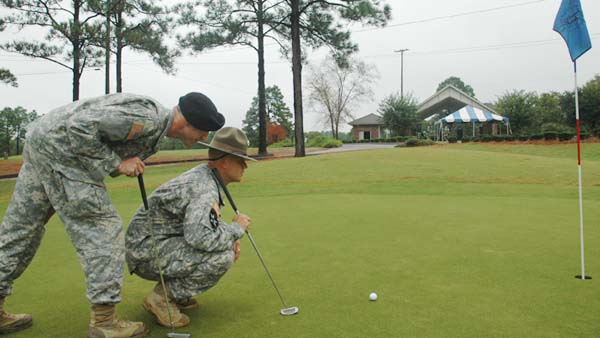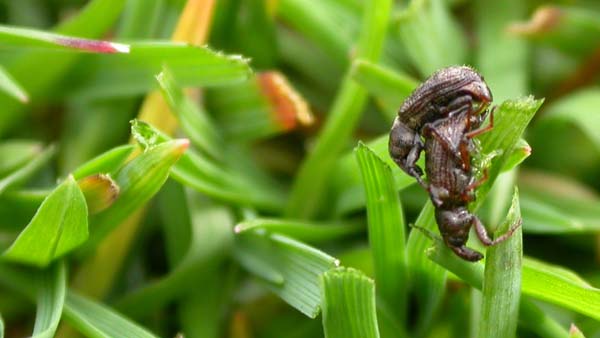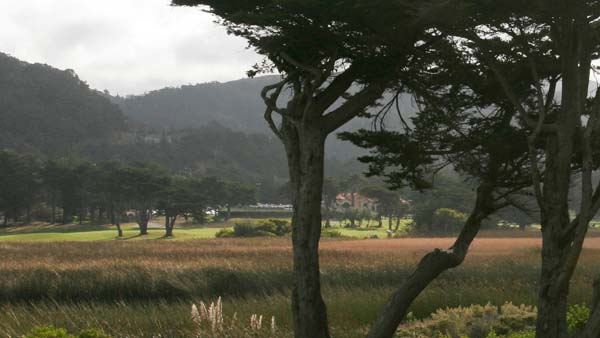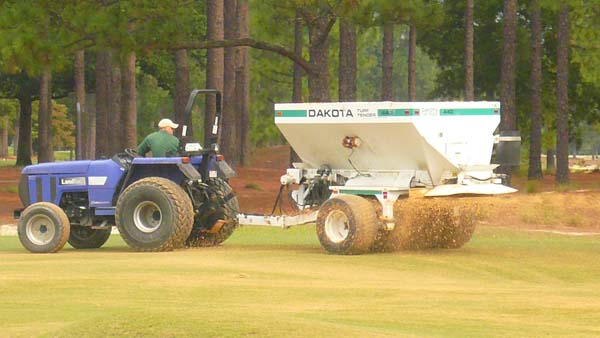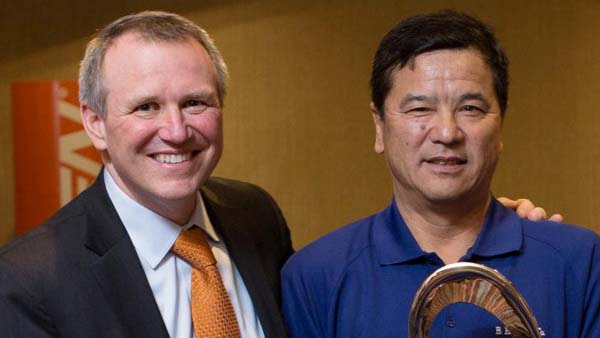
Solution center
By John Reitman, in News,

Innovation is a subject Syngenta takes seriously. The company employs 28,000 people in 90 countries around the world and spends $1.4 billion annually on research and development. For each new chemistry that makes it to market, its 5,000 R&D staffers look at 100,000 compounds per year, and the company spends an average of $250 million. That focus on innovation was on display recently at Syngenta's 240-acre research and development facility in Vero Beach, Florida, with the addition of a host of new solutions for superintendents.
At the event, called Turf Innovation, Syngenta officials announced the addition of Heritage Action fungicide, due out later this year; Avid nematicide, which is expected to receive label registration from the U.S. EPA next year; and the return of Appear fungicide. The company also provided a closer glimpse at some recent launches, including Ference insecticide for annual bluegrass weevil control, upgrades to the Weevil Trak platform it acquired from DuPont and Velista fungicide, which was announced at this year's GIS.
Heritage Action
With anticipated availability of this summer, Heritage Action combines Heritage, a strobilurin fungicide with the active ingredient azoxystrobin, with acibenzolar-s-methyl (the same active ingredient found alongside chlorothalonil in Daconil Action) to help boost the turf's natural biotic (plant diseases and pests) and abiotic (weather conditions, agronomic practices) stress-management capabilities.
Some of the benefits of Heritage Action that have been reported in research, says Syngenta's western technical manager Dean Mosdell, include quicker recovery from abiotic and biotic stress, less midday wilting and a corresponding reduced need to handwater, quicker fill-in after aerification, quicker green-up, enhanced disease control (especially when used in concert with Daconil Action), and exceptional control of anthracnose, bacterial wilt, dollar spot and Pythium.
Just like Daconil Action, the key to the effectiveness of Heritage Action stems from a trait known as systemic acquired resistance, which means the acibenzolar-s-methyl enhances the plant's own genetic traits to resist stress.
That includes enhanced drought resistance. Ongoing research at North Carolina State University headed by professor Tom Rufty, Ph.D., is aimed at providing a better understanding of just how that works. Although researchers there have not yet connected all the dots regarding SAR and drought tolerance in turf, they do know it works. And that could be beneficial for superintendents in the western United States or anywhere else who are facing drought conditions.
"The idea that there could be a chemistry that gives you a similar kind of response is surprising," Rufty said. "But it does imply there could be a chemical intervention into the drought condition that could help diminish the damage that is being done, obviously. And so we're challenging this all the time. It's hard for me to accept, really, but it's recurring over and over, and even with our skeptical and critical approaches, we haven't been able to disprove anything yet."
Appear
Superintendents might remember Appear fungicide, which first appeared on the market late in 2012, then quickly disappeared. A potassium phosphite fungicide, Appear is a pigmented product that has spent the past two years tied up in a patent-infringement suit. That suit was dismissed in January in federal court in North Carolina, and Appear has since been cleared for sale again.
(Appear) stimulates a plant's natural defenses to help it resist infection more effectively.
A pigmented product (phthalocyanine), Appear is labeled for control of Pythium and anthracnose, and is designed to work in concert with Daconil Action to offer not only enhanced disease control, but improved turf quality and protection from summer stress, even during extreme temperatures. Unlike many other potassium phosphate fungicides, which can cause foliar burn under extreme conditions, Appear is safe for use on putting green height turf.
"It stimulates a plant's natural defenses to help it resist infection more effectively," said Syngenta technical specialist Lane Tredway, Ph.D.
"There are no temperature restrictions on the label, and the formulation makes the active ingredient safe for greens, even under extreme conditions."
The role the pigmentation plays in promoting enhanced turf health isn't exactly clear yet, said Tredway.
"In cool-season grass, the primary concerns are heat stress and excess sunlight during summer, and there is some controversy and debate how a pigment can protect cool-season grasses from those abiotic stresses. But the bottom line is they do," Tredway said. "The coating of pigment on the surface of the leaf is helping protect the plant from those hot and stressful conditions."
Avid
With Nemacur no longer available for sale, and existing stock being phased out over the next two years, superintendents across the country are struggling to control nematodes.
Due out as early as 2016, Avid is a nematicide with the active ingredient abamectin, that is effective at controlling a variety of plant-parasitic nematodes in cool- and warm-season grasses when part of a season-long program, said Syngenta's Tredway.
"Nothing is as effective as Nemacur. This is not something you can apply once and get control, which was essentially what you could do with Nemacur," he said. "With today's products, it's going to take a season-long program. It's something that is going to require attention throughout the season with regular applications."
While awaiting registration by the EPA, Avid does have a 24© label in 17 states.
When used alone, Avid shows only marginal results at controlling nematodes. It works best when used in conjunction with Heritage Action. The result is not necessarily fewer nematodes, but healthier turf that is able to withstand nematode populations. The turf also is able to withstand fungal attacks that often come in behind nematode infestations.
Syngenta surveyed customers last year, and learned that many were unsatisfied with the nematode control options at their disposal.
"When Avid is used in combination with Heritage, that satisfaction level goes up dramatically," Tredway said.
"You don't see a dramatic reduction in populations. You do get more root growth. Sometimes, you might see populations go flat or down a little or maybe they will even go up. At the end of the day, the turf is healthier and even though there may be just as many nematodes, there is a deeper and denser root system and the turf is able to withstand those populations better."
- Read more...
- 3,199 views


